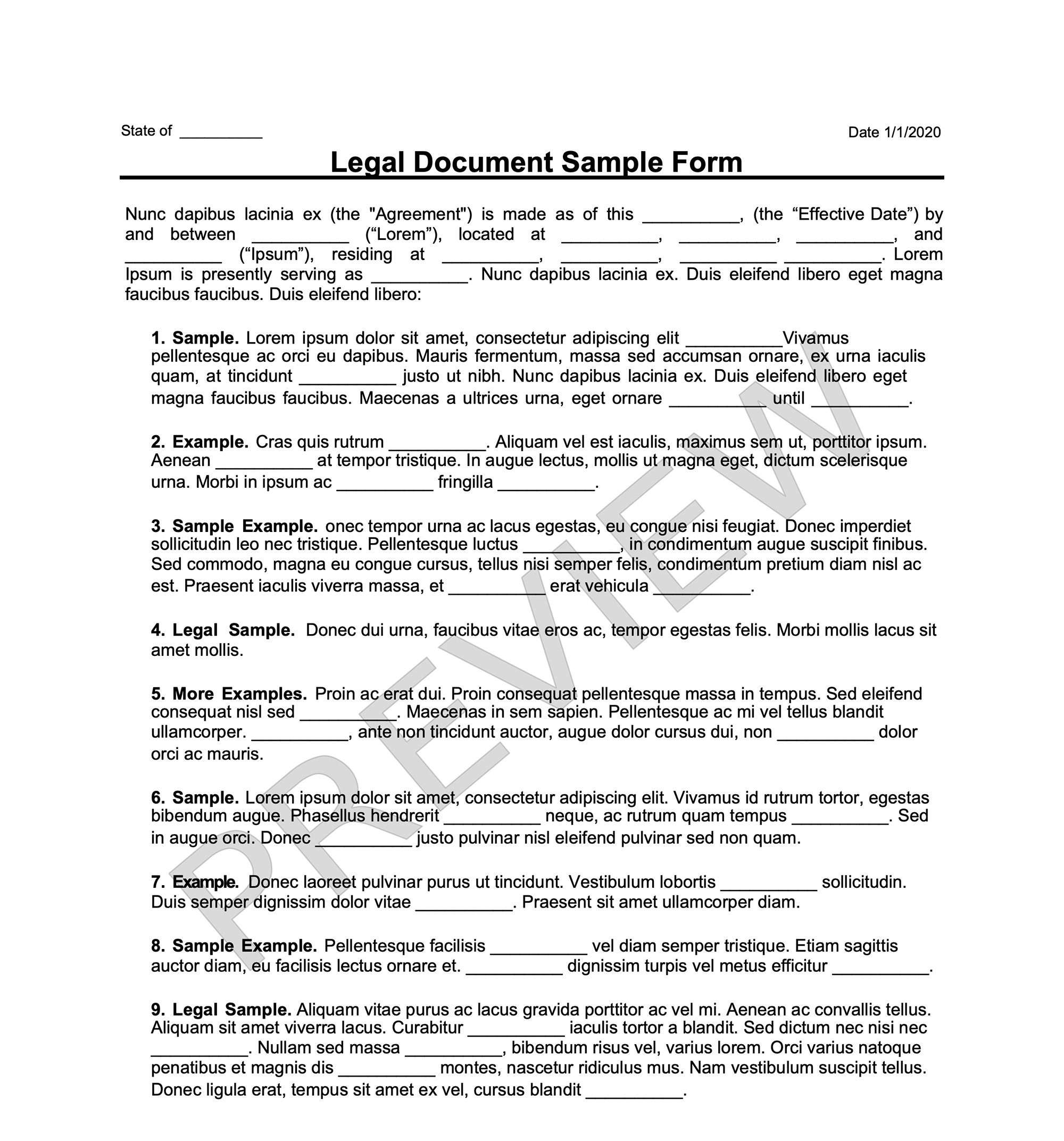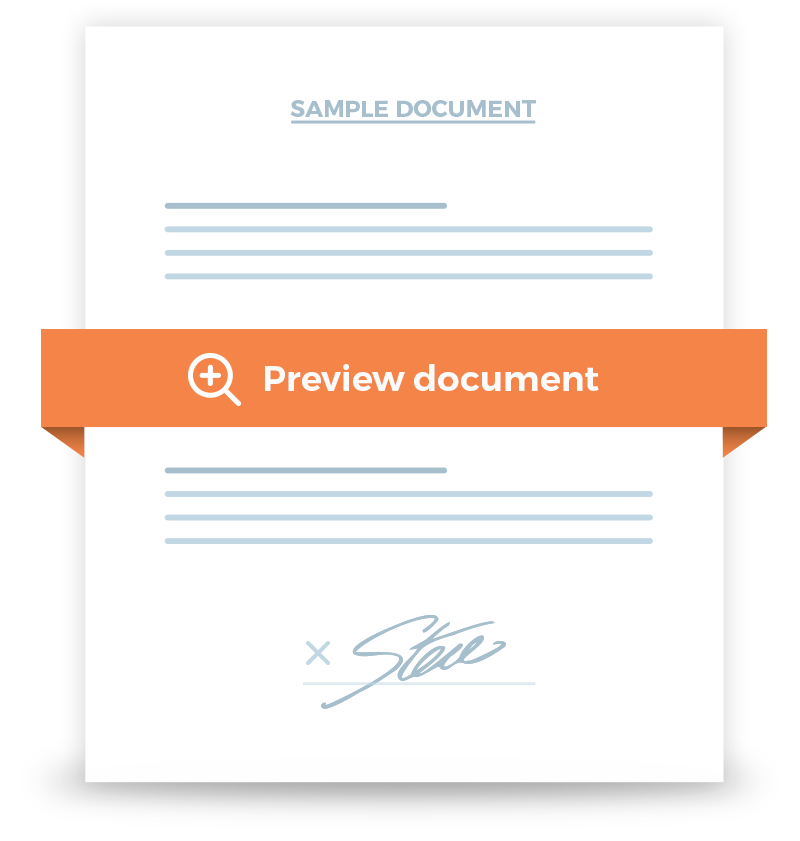Being a landlord is much more regulated than you might expect. Keeping track of who occupies your property and the terms under which they occupy it is not only smart, it's required by federal law.
Being a tenant comes with certain rights and responsibilities. Having those rights and responsibilities clear from the outset should be a priority for any tenant.
A Residential Rental Agreement protects both parties. The landlord complies with regulatory requirements and makes the conditions of tenancy clear. The tenant understands what they can and cannot do to the property and what they can demand from the landlord.
What Is a Residential Rental Agreement?
A Residential Rental Agreement is a legally-binding document that establishes a tenant-landlord relationship for a specified property. It outlines the terms and conditions under which a tenancy is legitimate and the obligations and responsibilities of each party to maintain that legitimacy.
Residential Rental Agreements can be used for any kind of residential property, including apartments, houses, and condominiums. Whenever a tenant rents a residential property from a landlord, this type of agreement can be used to govern the relationship.
Other Names for Residential Rental Agreement
Depending on your state, a Residential Rental Agreement may also be known as:
-
Lease Agreement
-
Apartment Lease
-
House Rental Agreement
-
Lease Form
-
Rental Contract
Who Needs a Residential Rental Agreement?
Anyone entering a residential rental relationship is advised to use a Residential Rental Agreement. This includes:
-
Homeowners renting some or all of their property
-
Tenants renting a residential property
-
Individuals renting property to friends or relatives
-
Property managers
Using this type of agreement outlines, in writing, the rights and responsibilities of the contracting parties and prevents either from trying to alter conditions of the residency.
Typically, only individuals will need a Residential Rental Agreement. Businesses and other organizations use Commercial Rental Agreements.
Why Use 360 Legal Forms for Your Residential Rental Agreement?
Customized for you, by you
Create your own documents by answering our easy-to-understand questionnaires to get exactly what you need out of your Residential Rental Agreement.
Right for your state
Each document on 360 Legal Forms is customized for your state.
Fast and easy
All you have to do is fill out a simple questionnaire, print, and sign. No printer? No worries. You and other parties can even sign online.
How to Create a Residential Rental Agreement with 360 Legal Forms
Making sure your Residential Rental Agreement contains all the right clauses is crucial to protect your property. With 360 Legal Forms, all you need to do is fill out a few required fields, and we will put together a Residential Rental Agreement that's right for your needs and your local laws.
Let 360 Legal Forms help with our extensive library of attorney-vetted legal forms. The process is fast and easy. All you have to do is fill out our simple-to-understand questionnaire. Once complete, just download your form as a PDF or Word document from your secure online account.
What Information Will I Need to Create My Residential Rental Agreement?
To create your document, please provide:
-
Landlord: The full name and address of the person who owns the property.
-
Tenant: The full name and address of the person leasing the property.
-
Property: Full description of the property in question. This should include the address, square footage, amenities, and other relevant details.
-
Lease Specifics: The terms and conditions of the rental agreement. These should include the length of the rental agreement and type of renal agreement..
-
Payment Details: All the details relating to rent payment for the agreement, including the amount due, payment frequency, and other details, such as security deposit information.
-
Rights and Obligations: The rights and obligations of both the tenant and the landlord.
-
Dispute Resolution: How disputes arising from the Residential Rental Agreement will be settled, whether through mediation, arbitration, or both.
-
Other Details: Any other clauses that apply to the rental agreement.
Residential Rental Agreement Terms
-
Pro Rata: Describes a situation in which a payment is made in proportion to something received. For example, if the tenant overstays at the property for a few days, they will only have to pay for that time rather than a whole month even if rent is established on a monthly basis.
-
Residential Purposes: The use of property only as a place to live and not to do business in.
-
Mechanic's Lien: The right of a filer (usually a contractor) to seek unpaid compensation for work done on a property. Usually, a Residential Rental Agreement does not allow Mechanics' Liens to be placed on a property.
-
Remedies: A contract clause that explains what the landlord can do if the rental agreement is terminated by the tenant's inability to pay rent.
-
Guarantor: A person who guarantees they will pay for the tenant's debt if the tenant cannot or will not pay.
What Payments Are Associated With a Residential Rental Agreement?
There are two categories of payments typically found in this rental agreement, recurring payments and one-time payments.
Recurring Payments
-
Rent: The primary recurring financial obligation exchanged in order to occupy the premises.
-
Pet Rent: In addition to or in place of the pet deposit, pet rent may be required by the landlord for a tenant living with pets.
-
Parking Fee: The landlord may have an additional charge for the use of parking spaces.
One-Time Payments
-
Security Deposit: An amount of money the tenant deposits with the landlord. It is kept for the duration of the tenancy and may be applied by the landlord to damages and unpaid rent after the agreement ends. Some states require the security deposit to be placed in an account with a financial institution.
-
Pet Deposit: For tenants that bring pets into the premises, the landlord may require a pet deposit. This amount is usually retained for damage caused by the animals.
-
Prepaid Rent: The Landlord may require prepayment of a certain number of months of rent. There are also instances where the tenant may want to pay for multiple months up front.
Residential Rental Agreement Signing Requirements
To be valid, a Residential Rental Agreement needs to be signed by the landlord and all tenants. If a guarantor is used, the guarantor should also sign the agreement.
In most cases, a Residential Rental Agreement doesn't need to be notarized. As soon as it is signed by the tenants and the landlord, the agreement is legally enforceable. However, using a notary is a good way to avoid any trouble down the line and ensures that no one can challenge the signatures in the future.
What to Do With Your Rental Rental Agreement
Tenants should keep a signed copy of the Rental Rental Agreement for their personal records. Keep this copy as long as you reside at the property and until you have moved out and received your security deposit back.
As a landlord, go through the rental agreement thoroughly with your tenants and make sure they understand all the important points and provisions. After it's signed and dated, provide a copy to your tenants and retain a copy for your personal records.
Related Documents





